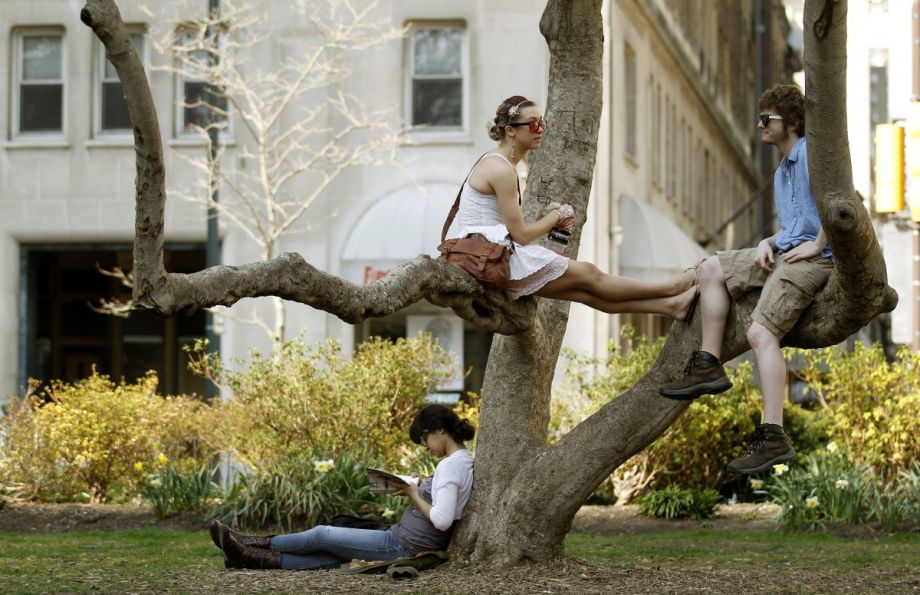Residents in Seattle’s Highland Park neighborhood are in the midst of debate about open space. In 2003, the city purchased a 38-acre, commercially zoned former gravel pit. They built a fire department training facility on seven acres at the northern end of the property. The rest of the 31 acres were declared surplus and may now be sold off for commercial development.
Mayor Ed Murray says some proceeds from the sale would help fund his response to the city’s homeless crisis. Housing advocates say the city should build affordable housing on the site. Open space advocates say it’s a rare opportunity to build a new park and protect a natural area in a rapidly developing city. (Though it used to be a gravel pit, the site is heavily forested in sections.) All three have merit, but the latter option has a unique argument in its favor. If the city builds a park, or even just leaves the space as is, it could extend the lives of neighborhood residents.
A new study published in the journal Environmental Health Perspectives found that closeness to natural vegetation, parks, street trees and other “greenness” lowered the mortality rate nearby. Researchers at the Harvard School of Public Health used data from the Nurses’ Health Study cohort, which has biannually collected health data from over 100,000 nurses across the U.S. since 1976.
The researchers looked at Health Study data from 2000 to 2008, which includes home addresses for each participant. They measured greenness around each home using satellite data and compared that to information from death certificates and medical records. After accounting for age, race, socioeconomics and smoking behaviors, the researchers found that those living with the most greenness within 250 meters of their home had a 12 percent lower non-accidental mortality rate (meaning to die from, say, cancer or respiratory-related disease) than those living near the least greenness.
Though parks are a type of greenness, the researchers looked at all measurable vegetation.
“We don’t distinguish between a park and a vacant lot; if they had the same amount of vegetation they would get the same measure,” explains Peter James, a research associate at Harvard’s School of Public Health and the study’s lead author. “It might speak to the fact that in our day-to-day we might be more likely to see a street tree or grass or landscaping rather than actually going to a park.”
The Harvard study findings are in keeping with similar studies that have found a positive link between health and exposure to parks and natural areas. But, James says, most of those studies looked at census tracts. The wealth of data provided by the Nurses’ Health Study allowed the Harvard researchers to dig in to individual health factors to determine what it is about exposure to greenness that’s lowering mortality rates.
“People think access to nature might add opportunity for physical activity, might lower exposure to air pollution or increase opportunities for social interaction,” James says. And while all those things are contributing factors, their study found the strongest link in how nature decreases stress and improves mental health.
“Surprisingly, we found that more than 30 percent of the association between greenness and mortality was explained by this mental health pathway,” says James. That mental health benefit is explained in part by famed biologist E.O. Wilson’s theory of biophilia, which says that because humans evolved with nature, we have a subconscious love of nature and therefore feel better when we’re in and around the natural world.
Though the Nurses’ Health Study provided an unprecedented depth and breadth of data in some regards, James admits it’s a fairly narrow sample in others. The study was just of primarily white women, who were all nurses at one time. “It kind of limits the generalizability of the sample … but it’s still over 100,000 people living over all different types of geographic areas across the U.S. We also don’t really have any reason to believe results would differ for women than men.”
James thinks as the links between health and urban greenness become more commonplace, cities will start considering it in their parks and open space plans.
“We already know vegetation has a lot of benefit for reducing runoff and for climate change mitigation,” James says. “But we’re really establishing this body of evidence that there might be a co-benefit for health. That’s a nice idea for an actionable tool policymakers and planners and developers.”
The Works is made possible with the support of the Surdna Foundation.

Josh Cohen is Crosscut’s city reporter covering Seattle government, politics and the issues that shape life in the city.
Follow Josh .(JavaScript must be enabled to view this email address)

















